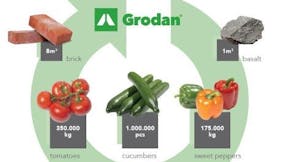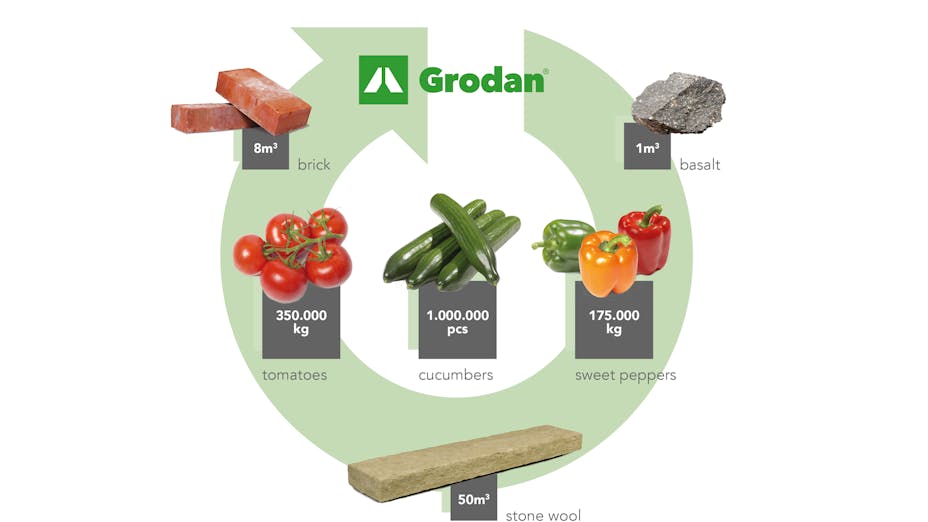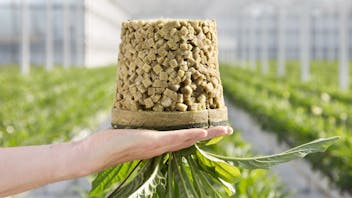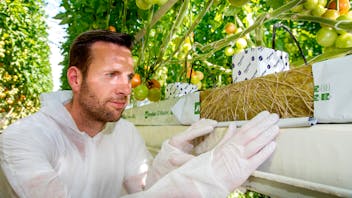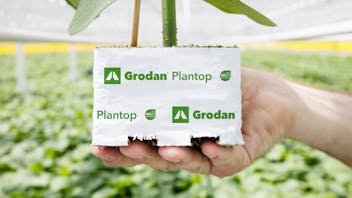Why is the water content of the used substrate important?
For recycling purposes the water content of the substrate slabs is most optimal at approximately 20% (v/v, measured with GroSens Multisensor) before cutting-off the crops (maximum crop stem is 3 centimeter). A slab with dimensions 100x20x7.5cm with ideal water content weighs approximately 3 kilograms.
Too low water content in used substrate will result in:
- dust formation during handling in the recycling process. A minimal moisture content of 15% (w/w) is advised to prevent this
- less breakdown of the substrate structure resulting in a lower density of the used substrate. The lower the density, the lower the volume, the lower the costs of transportation.
Too high water content in used substrate will result in:
- a higher residual water fraction. As water treatment is expensive, the total recycling costs will increase. It is better to reuse the water (containing useful components) in the greenhouse
- a higher risk of uncontrolled water leachate emissions into the environment as, during storage and transportation, leachate may be lost.
Characteristics and safety of the used substrates
Approximately 52m3 of EOL substrate will become available from each hectare of greenhouse area. This used substrate material can be considered as virgin material containing nutrient solution and organic material mainly from plant roots. The composition of the nutrient solution is dependent on the growers’ recipes and the end of growing season procedure. An idea of the estimated composition and characteristics of the Grodan substrate and the separated fractions in the various phases can be found in the Grodan Recycling Manual.
Recycling partners
We continuously initiate, facilitate and manage recycling initiatives worldwide. Especially in Europe we gained a lot of knowledge and experience in reuse, recycling and upcycling of used stone wool products. R&D, continuous improvement and eco-design will offer the opportunity to extend the range of stone wool recycling loops in the future.
